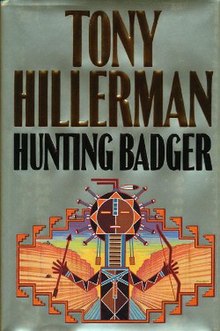
Anthony Grove Hillerman was an American author of detective novels and nonfiction works, best known for his mystery novels featuring Navajo Nation Police officers Joe Leaphorn and Jim Chee. Several of his works have been adapted for film and television.
Jim Chee is one of two Navajo Tribal Police detectives in a series of mystery novels by Tony Hillerman. Unlike his superior Joe Leaphorn, the "Legendary Lieutenant", Chee is a staunch believer in traditional Navajo culture; indeed, he is studying to be a traditional healer at the same time that he is a police officer.

The Navajo Nation Police is the law enforcement agency on the Navajo Nation in the Southwestern United States. It is under the Navajo Division of Public Safety. It is headed by a Chief of Police, six Police Captains and eight Police Lieutenants. It includes: Internal Affairs, Patrol, K-9 Unit, Police diving, Tactical Operations Team, Traffic Unit, Fiscal management, Recruitment, and Training Divisions. The Navajo Nation Police are responsible for seven districts: Chinle, Crownpoint, Dilkon, Kayenta, Shiprock, Tuba City, and Window Rock. There are also several substations in each district ranging from one-man substations or up to five officers each. Currently, there are 210 sworn police officers, 28 criminal investigators, and 279 civilians acting as support staff for the department. There are approximately 1.9 police officers per 1,000 people and one officer is responsible for patrolling 70 square miles (180 km2) of reservation land. The Navajo Nation Police are funded by federal contracts and grants and general Navajo Nation funds. This police department is one of only two large Native American police Departments with more than 100 sworn officers in the United States.

The Fallen Man is a crime novel by American writer Tony Hillerman, the twelfth in the Joe Leaphorn/Jim Chee Navajo Tribal Police series, first published in 1996.
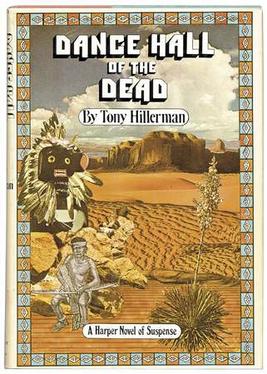
Dance Hall Of The Dead is a crime novel by American writer Tony Hillerman, the second in the Joe Leaphorn/Jim Chee Navajo Tribal Police series, first published in 1973. It features police Lieutenant Joe Leaphorn. It is set primarily in Ramah Reservation and the Zuni village in New Mexico, both in the American Southwest.

Talking God is a crime novel by American writer Tony Hillerman, the ninth in the Joe Leaphorn/Jim Chee Navajo Tribal Police series, published in 1989.

Listening Woman is a crime novel by American writer Tony Hillerman, the third in the Joe Leaphorn/Jim Chee Navajo Tribal Police series, first published in 1978. The novel features Joe Leaphorn.
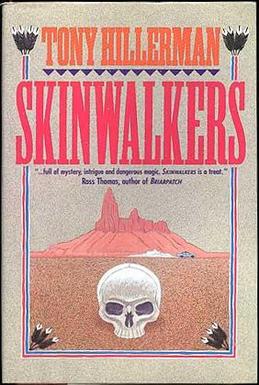
Skinwalkers is a crime novel by American writer Tony Hillerman, the seventh in the Joe Leaphorn/Jim Chee Navajo Tribal Police series, published in 1986. The film version, Skinwalkers, was adapted for television for the PBS Mystery! series in 2002.

People of Darkness is a crime novel by American writer Tony Hillerman, the fourth in the Joe Leaphorn/Jim Chee Navajo Tribal Police series, first published in 1980. It is the first novel in the series to feature Officer Jim Chee. The AMC television series Dark Winds adapted the novel in its second season.

The Ghostway is a crime novel by American writer Tony Hillerman, the sixth in the Joe Leaphorn/Jim Chee Navajo Tribal Police series. It was first published in 1984 and features Jim Chee.

A Thief of Time is a crime novel by American writer Tony Hillerman, the eighth in the Joe Leaphorn/Jim Chee Navajo Tribal Police series, first published in 1988. It was adapted for television as part of the PBS Mystery! series in 2004.
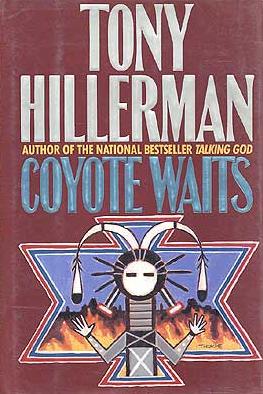
Coyote Waits is a crime novel by American writer Tony Hillerman, the tenth in the Joe Leaphorn/Jim Chee Navajo Tribal Police series, first published in 1990.

Sacred Clowns is a crime novel by American writer Tony Hillerman, the eleventh in the Joe Leaphorn/Jim Chee Navajo Tribal Police series, first published in 1993.

The First Eagle is a crime novel by American writer Tony Hillerman, the thirteenth in the Joe Leaphorn/Jim Chee Navajo Tribal Police series, first published in 1998.

The Wailing Wind is a crime novel by American writer Tony Hillerman, the fifteenth in the Joe Leaphorn/Jim Chee Navajo Tribal Police series, first published in 2002. It is a New York Times best-seller.
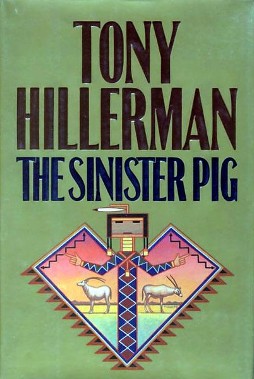
The Sinister Pig is a crime novel by American writer Tony Hillerman, the sixteenth in the Joe Leaphorn/Jim Chee Navajo Tribal Police series, first published in 2003. It was a New York Times best-seller.

Skeleton Man is a crime novel by American writer Tony Hillerman, the seventeenth in the Joe Leaphorn/Jim Chee Navajo Tribal Police series, first published in 2004. It was a New York Times best-seller

The Shape Shifter is a crime novel by American writer Tony Hillerman, the eighteenth in the Joe Leaphorn/Jim Chee Navajo Tribal Police series, first published in 2006. It was a New York Times best-seller and the last Chee/Leaphorn novel by Hillerman published before Hillerman's death on October 26, 2008.

Song of the Lion is a 2017 release and the third Leaphorn/Chee mystery written by Anne Hillerman, daughter of the series originator Tony Hillerman. The title is derived from Navajo culture, which speaks of a cougar, Náshdóítsoh, who protects the Navajo people. After her father's 2008 death, Anne continued the series. The Navajo Nation on which the story takes place, is a geographical area that spans 27,000 square miles over the connecting borders of the US states of Arizona, New Mexico and Utah. According to the NN itself, it encompasses 500 Indian tribes on 318 reservations.

Spider Woman's Daughter is a crime novel by American writer Anne Hillerman, released in 2013. It is the first Leaphorn/Chee mystery written by her, the daughter of the series originator Tony Hillerman. The title of the book is derived from Native American legends. Spider Woman was the one who taught the Navajo people how to weave. Officer Bernadette Manuelito is the daughter of a weaver, and married to Officer Jim Chee. He nicknamed her "Spider Woman's Daughter" for her ability to weave together a complex array of evidence to solve a crime. In her debut effort to continue the series, Anne Hillerman has given the reader an exceptionally detailed plot and long list of characters. One reviewer at Goodreads.com counted 46 named characters.
